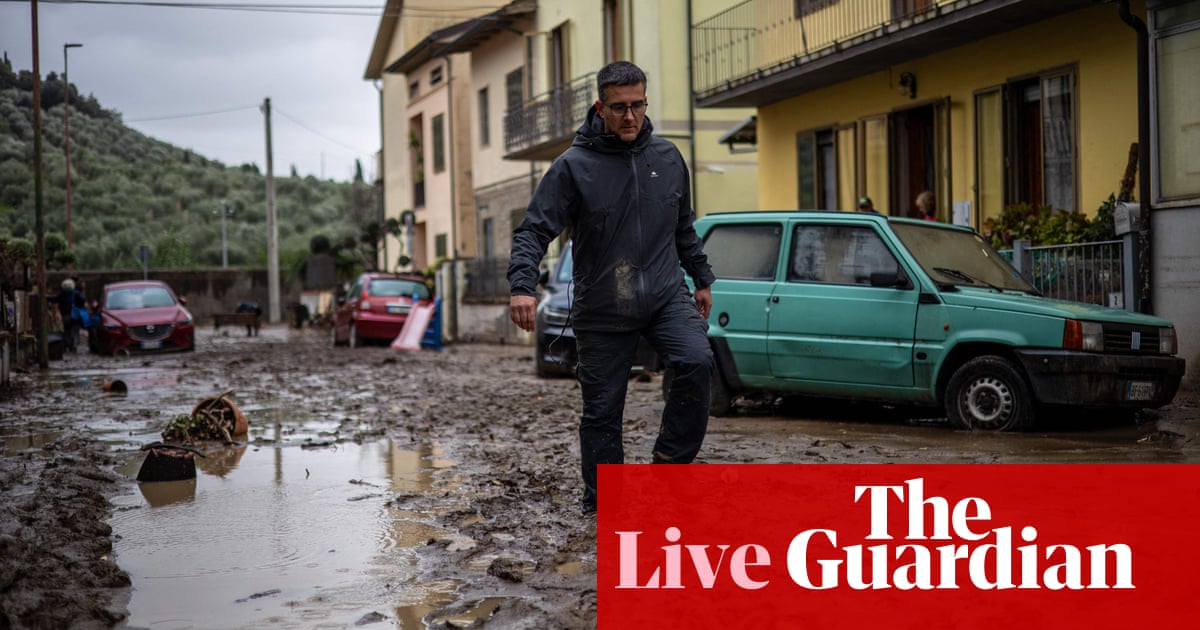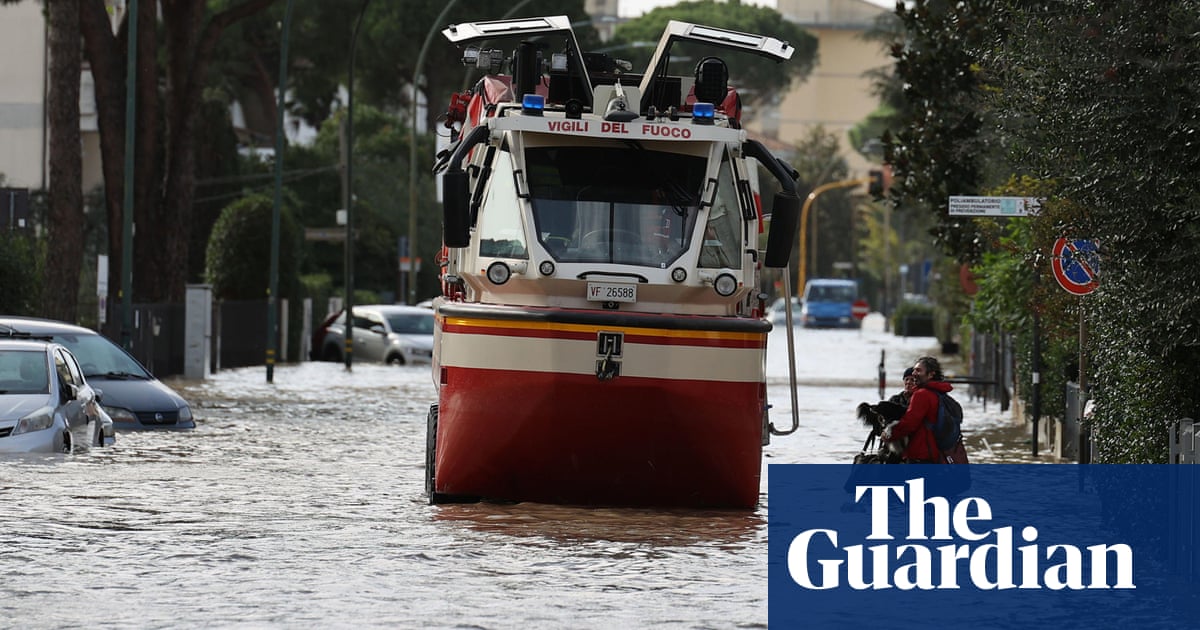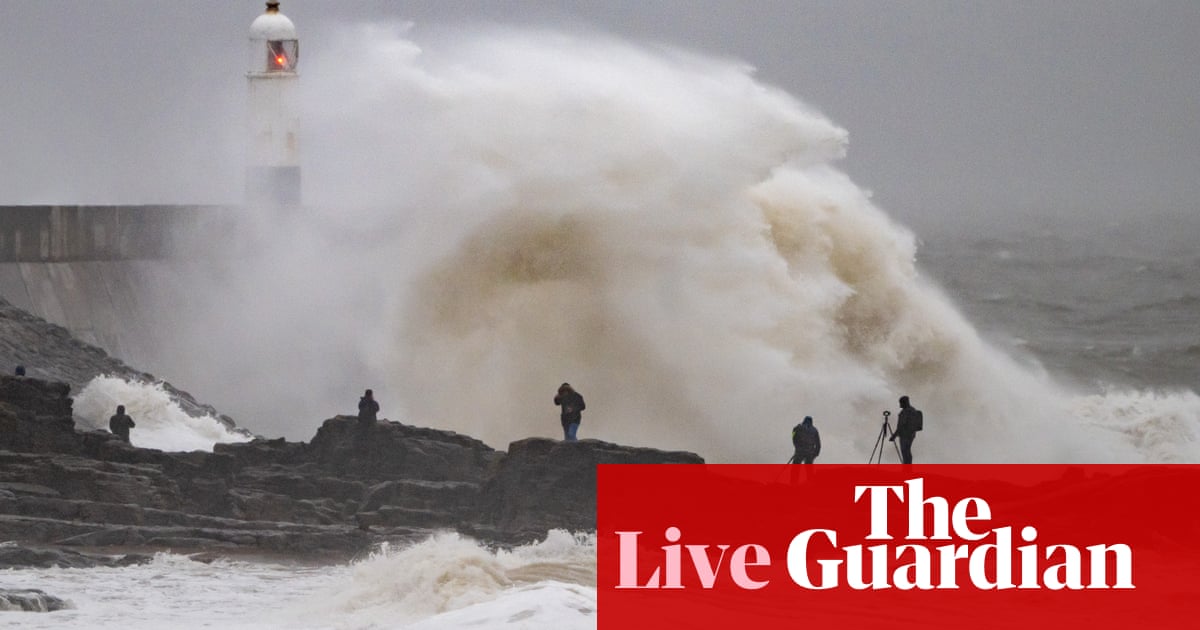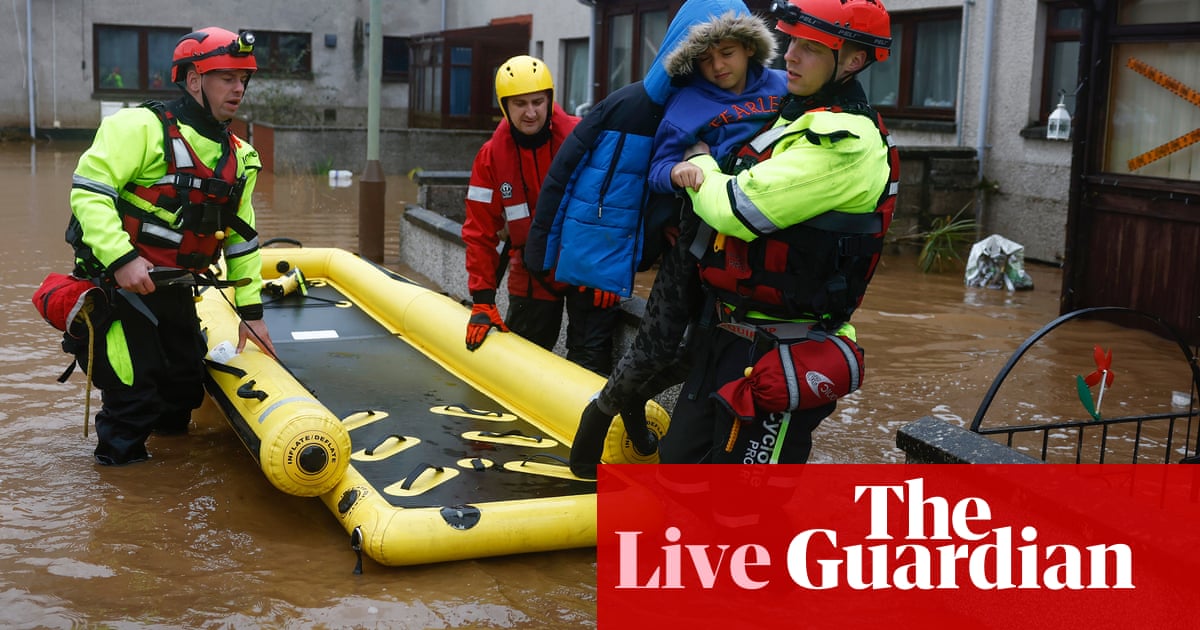
Spain evacuates 800 people as wildfire spreads amid strong winds
Spanish authorities evacuated at least 800 people around the coastal town of Gandia in the eastern region of Valencia after a wildfire broke out and spread overnight amid strong winds, officials said today, Reuters reported.
The fire began yesterday. About 2,500 people in the villages of Potríes and Ador were told to stay at home as the winds fanned smoke towards their homes, according to Reuters.
Summary of the day
Six people died as Storm Ciarán wreaked havoc in central and northern Italy overnight, bursting riverbanks and causing severe flooding.
Eugenio Giani, the president of Tuscany, announced a state of emergency, describing the situation as “really very serious”.
Spanish authorities evacuated at least 800 people in the region of Valencia after a wildfire spread overnight amid strong winds.
Storm Ciarán also triggered warnings in Croatia and Slovenia.
Greece’s national meteorological service warned about heavy rains, thunderstorms and hail.
Scientists said Storm Ciarán is a “bomb cyclone”. These are unusual storms, where explosive intensification leads to very strong winds.
Hannah Cloke, a professor of hydrology at the University of Reading, said the storm “serves as a reminder of the destruction and disruption that can be caused by stormy weather in the UK.
Trevor Hoey, a professor of river science at Brunel University London, said the UK is vulnerable to flooding and there is evidence things are getting worse in the era of climate change.
Slovenia’s environment agency has issued its second-highest level wind alert for the country’s south-west for tomorrow, STA reported.
Slovenia’s north-west areas are expected to see heavy rainfall.
Trevor Hoey, a professor of river science at Brunel University London and director of the Centre for Flood Risk and Resilience, said the UK is vulnerable to flooding and there is evidence things are getting worse in the era of climate change.
We are not as vulnerable as many other parts of the world, so we shouldn’t overstate our vulnerability. However, we are vulnerable to flooding because we are located in a relatively wet part of the world, so we are always going to get a lot of rain-bearing weather systems coming our way, and periodically, those are going to be very intense, heavy, prolonged rain, even in the absence of climate change.
There are always going to be periods where you get clusters of wet conditions that will give rise to flooding. On top of this, we are living in an era of climate change. And there is evidence that things are getting worse.
Hoey said that “periodically, there are large flood events that have occurred in the UK, and there has been a little bit of a pattern over the last 20 to 30 years of flooding events being followed by government instituting reviews”.
One of the things that does need to be looked at in the UK context is to have that dialogue between national government, local government and other responsible authorities, so that we do the integrated planning that is in all of the reviews that have been conducted. There are always recommendations about integration, but it is a real challenge.
Five people have died in Tuscany as Storm Ciarán swept through central and northern Italy overnight, bursting river banks and causing severe flooding.
Watch footage here of Italy’s flooding.
Hannah Cloke, a professor of hydrology at the University of Reading, has said: “Storm Ciarán serves as a reminder of the destruction and disruption that can be caused by stormy weather in the UK.”
The links between climate change and winter storms in Europe are complex, but as seas and air temperatures get warmer, we expect some winter storms to bring more rain, and potentially cause more flooding.
It is important that people realise that these risks exist now. Storms and flash flooding can hit anywhere, and the best thing that people can do right now is to check their local flood risk maps, which are available from the Environment Agency in England or national agencies in Wales, Scotland and Northern Ireland.
People should also be mindful to heed warnings. Many deaths and injuries occur during storms because people have decided to ignore warnings or are not aware of them.
Cloke also cautioned that “in terms of future resilience and preparedness, I would say we are not very well prepared in some places even now”.
At some locations in the UK, climate change means that existing threats will become more likely and more dangerous, such as on some coasts as sea levels rise, or in areas prone to landslips or river flooding. Resilience to storms means taking action to prepare for the worst possible conditions while the going is good, and that can seem expensive and unnecessary to many people when the sun is shining.
The president of Tuscany has shared another dramatic photo of the storm’s impact.
Jane Clinton
‘Genuine disaster area’
Denis Coombes and his wife, Paula, who live in central Brittany, have spoken about Finistère, in western Brittany, being a “disaster area”.
The couple, who are now retired, moved to Brittany in 2000 from Sussex and live in Neulliac. They have emerged relatively unscathed from the storm, bar a few fallen tree branches, but several of their acquaintances in Finistère have no water, electricity or phone connection and have experienced major damage to their property.
“We were very lucky, with some branches down and the local shopping centre is without internet or telephone service,” said Coombes.
“However, if you want to hear horror stories, we have acquaintances in Finistère who are without the basics. One person I know is without electricity, the phone lines are down and the roof of her outbuilding was blown off. She is having to travel to the nearest town, Carhaix, to buy bottled water. Another person who has a smallholding has lost all of his outbuildings. He is also without water, electricity and internet and has lost lots of his trees. So it is a genuine, genuine disaster area.”
An orange alert is still in force in parts of Tuscany.
Forty-five flood warnings are still in effect in England.
More photos of the extensive storm damage in Tuscany.
Croatia and Slovenia have also experienced heavy rain.
Here is a view of the River Sava in Zagreb today.
Storm Ciarán a "bomb cyclone", scientists say
Storm Ciarán, still wreaking havoc across Europe, is a “bomb cyclone”, scientists have explained. These are unusual storms, where explosive intensification leads to very strong winds.
Colin Manning and Hayley Fowler, at Newcastle University in the UK, said Storm Ciarán was also unusual among North Atlantic storms in producing both heavy rain and high winds over large areas. Such storms are likely to become more frequent due to the climate crisis, they warned.
“Ciarán is the UK’s third named storm in a winter storm season that is shaping up to be exceptionally turbulent,” they said. “The succession of storms since August 2023 has been driven by an unusually strong jet stream that has shifted further south than is typical for this time of year.
“A stronger jet stream can make storms more powerful, and a more southerly position means that storms are warmer and carry more moisture and energy, making rapid intensification more likely,” they said.
“Recent storms show that society has not adapted to worsening climate conditions. Alongside drastically cutting emissions, countries must build more resilient infrastructure to adapt to a more turbulent climate. This will be costly, but far less costly than doing nothing.”
More photos from Italy today.
A state of emergency is now in place in Tuscany.
Here are more photos from Spain, where a wildfire in the region of Valencia has spread amid strong winds.
Spain evacuates 800 people as wildfire spreads amid strong winds
Spanish authorities evacuated at least 800 people around the coastal town of Gandia in the eastern region of Valencia after a wildfire broke out and spread overnight amid strong winds, officials said today, Reuters reported.
The fire began yesterday. About 2,500 people in the villages of Potríes and Ador were told to stay at home as the winds fanned smoke towards their homes, according to Reuters.
Storm Ciarán battered north-west Europe yesterday with torrential rain and winds of up to 200km/h (124mph), damaging homes and forcing schools to close and airlines and train companies to halt services.
A truck driver was killed by a falling tree in the Aisne département of northern France, authorities said on Thursday, while more than 1.2 million people lost their electricity supply, including about half the population of Brittany.
A 70-year-old man died in Le Havre after falling off his balcony in an accident police described as linked to Storm Ciarán’s record-breaking winds, while in Spain a woman was killed when a tree fell on her in central Madrid and three people were injured.
Two people died in central Ghent, Belgium, after being hit by falling branches from trees. One of the victims was five years old, while the other was a 64-year-old German woman visiting Belgium. A third was seriously injured in the port city of Antwerp when a high wall gave way in record winds, authorities said.
In the Netherlands a person was crushed to death by a tree in Venray in the southern province of Limburg, local media said. At least 10 other people were injured by flying debris around the country, at least three seriously.
The German fire service also said on Thursday that a 46-year-old woman from Bavaria who was on a family holiday with her husband and two children had been killed by a falling tree while out hiking near Rammelsberg in the Harz mountains.
We would like to hear from you.
How have you been affected by Storm Ciarán? Send your thoughts.












